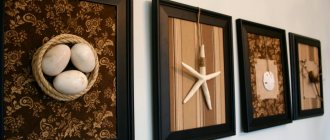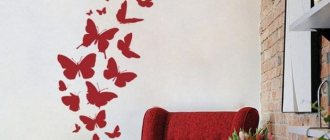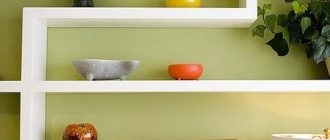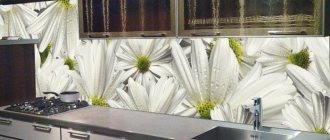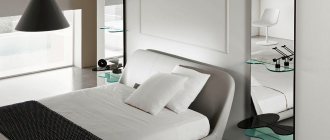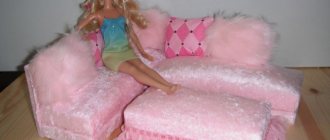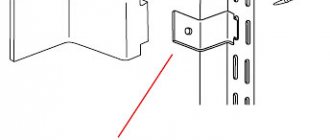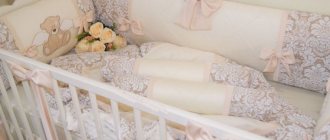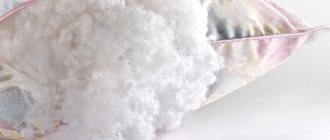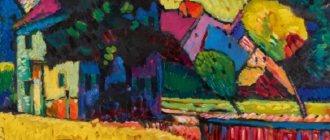You can make a beautiful and original panel with your own hands from scrap materials. This is usually cheaper than buying a ready-made option or contacting specialists with an order, but at the same time it allows you to create exactly the option that the owner will like.
In this way, you can turn your house into not just a living space, but a real “your corner”, reflecting the inner world, interests and fantasies of its inhabitants.
Also, if necessary, the panel can hide wall defects or poor-quality repairs without requiring large financial costs.
What it is
The panel is a decorative element and its purpose is to decorate the interior and fill empty space on the walls or ceiling. Sounds a lot like the description of a painting, doesn't it? How does it differ from a painting, if both decorative options are designed to decorate the room? The answer is simple: a painting is a subject of painting art, and a panel can consist of anything. Dough, plastic, plaster, beads, fabric, wood - there is no limit to imagination when it comes to making panels and the material for decoration can be anything. If you want to make your interior unique, then the panel will do it perfectly!
Fabric applications
For such products you will need scraps of fabric, scissors, a needle, thread, a glue gun, and additional decorative elements (beads, buttons, etc.).
- The materials chosen are non-flowing and hold their shape well.
- Felt is perfect, easy to use and looks good in finished compositions.
- The panels can be decorated with embroidery elements, lace, and ribbons.
- Three-dimensional decorative elements sewn from double parts with filling inside (like soft toys) look beautiful.
Determining the scope of work
The first stage in creating a wall panel is to decide on the design of the future product. If you already know where it will be located, then this complicates the task. You need to weigh the color scheme, dimensions, what it will have, whether the material from which it is planned to be made fits into the overall picture of the interior.
So, we decide: size, color scheme and what materials will be used. This is the first step. If this is possible, then it is worth drawing a sketch of the planned product. This will help take into account all the nuances in completing the task.
If a piece of cardboard, canvas or any other hard surface is taken as a basis, then markings are made on it: where and how the decorative elements will be located. If the base is fabric, then it is stretched onto the base (for example, onto a piece of plywood, board or plastic), and the rest of the fabric is secured on the back side. After the craft is completed, it is placed in a frame and hung on the wall.
There is another option for making panels on a fabric basis. You will need to take a solid base, for example, a plasterboard sheet of the required size and glue foam rubber to it. The fabric is stretched onto the resulting soft base. In this case, you can do without a frame.
After all the preparations, you can begin the main part of production: decorating.
Original kanzashi technique
Even beginning craftswomen can master a panel on the wall with their own hands using the kanzashi technique. And working with colored ribbons is easy. Ribbons are used to create voluminous bouquets, New Year's compositions, and everything that will give the home comfort. To work you will need:
- Tweezers;
- Lighter;
- Colored threads;
- Decorative little things - beads or rhinestones.
- Wax candle;
- Glue gun.
- A large photo frame will work as a base.
- Colored ribbons 5 cm wide.
The glass frame is transferred to the prepared material and outlined. The fabric is cut along the contour. For the petals, take a ribbon and cut out a square 5 by 5 cm, the edges of the cut are processed with candles.
A piece of tape is folded diagonally three times, the resulting corner is treated with fire so that the part does not fall apart. By analogy, the required number of petals is collected, they are fastened with thread and form a flower. A bead is glued to the center.
There are a large number of different techniques for creating flowers. Once you get the hang of simple options, you can safely experiment and create your own unique shapes.
Types of panels with your own hands
Let's look at the main types used in decoration:
| Fabric | These are all variants of embroidery, applique and tapestry techniques that are made on fabric. The technique can be anything: from hand embroidery to machine embroidery, made in mass production. |
| Stone | Often made using mosaic technique. Natural stones that are considered noble are used: basalt, marble and others. Less often, such products also contain artificial stone. |
| Made of ceramics | They are made using ceramic tiles and are usually placed in the bathroom or kitchen. |
| Sculptural | A volumetric version of the product, which is made of special plaster, plaster or metal. |
| Graphic | Anything done using various types of printing. These can be reproductions of paintings, photo printing. |
| Other types | Here you can find handmade products made using any available materials. Salt dough, wood, dried flowers and plants, shells, clay, beads - there is no limit to your imagination for decoration. |
Here are examples of manufacturing different types of panels:
From prints of fruits and vegetables
A child can also participate in the creation of this panel, as it is very simple to make. The bright, colorful design of this creation is ideal for the kitchen.
For production you will need:
- Solid vegetables or fruits (this could be apples, any citrus fruits, pears, cabbage, etc.);
- Paint (gouache, oil, acrylic);
- The basis on which the decoration will be made. It can be cardboard, board, fabric stretched over a sheet of drywall.
The surface of the base is pre-degreased and painted in the desired shade. Cut fruits and vegetables into halves and dip them in paint. It is best to pour the dye thinly into a plate. We apply the cut side of the colored fruit to the base and get a stamp.
Stamps can be made anywhere on the base, but images that are positioned symmetrically look best.
Drawings created with “non-standard” brushes
Here you can take a brush made of feathers or threads for painting. To get patterns like in the photo, the brush needs to be dipped in almost dry paint . You can also use rag painting for a similar result.
It turns out that our fingers are the perfect shape for creating delightful modern paintings. Thanks to this, a wonderful picture of the panel turned out.
From salt dough
This type of panel is one of the most budget-friendly, since its production requires a minimum of material and usually everything you need is always at home.
We offer a version of a molded panel where your child’s arms and legs will be imprinted. This creation will allow you to decorate your baby's bedroom in an original way and preserve the memory of his childhood for a long time.
We will need:
- Flour;
- Salt;
- Colored gouache (optional).
Procedure:
- We take flour and salt in proportions of two to one. Two glasses of flour are mixed with a glass of salt, then water is added. The approximate volume of water for this amount of flour and salt will be 125 ml.
- Knead the stiff dough. If it sticks to your hands, then add more flour. The dough should be elastic and not stick to your hands.
- If you want to make the panel colored, then it’s time to add gouache, decorating the dough with it.
- Roll out the dough. Its approximate thickness should be about 2 centimeters. The shape of a piece of dough can be any.
- We bring the dough to the baby and gently press his palm and foot into the mass. The pressure should be light, but sufficient to leave a mark.
- We make two through holes in the dough - this is for the future ribbon, on which the panel will then hang.
- Place everything on a baking sheet and cover with baking paper.
- Preheat the oven to 90 degrees and put the dough there to dry. This will take approximately two to two and a half hours. It is necessary to carefully turn the dough once, halfway through drying.
- We paint the resulting panel with colored or white gouache, thread the tape through the holes - voila! A very touching and cute decoration for your home is ready!
Step-by-step development of the panel “Bouquet of Roses”
We start by preparing the disc, white tape and everything needed for the base. Without leaving any gaps, you need to wind the ribbon onto the disk, evenly placing the rings one on top of the other. Each layer should be coated with glue to create a dense structure. The tip should also be glued.
The required piece of cut from the tire should be glued to the outer edge of the rim. Prepare blanks from ribbons intended for making bud petals. Singe the ribbon sections using matches or a lighter. Lower the two upper corners located on one side of the tape down, bend them so that it looks like a house. Then the angles formed as a result of the bend should be combined with the original ones. Using fire, you can fix the workpiece.
Create 17 petals for each rose. Next you need to twist the petal into a tube, then stick another one, then a third one, this is how a bud is modeled.
It should be glued sequentially in a circle. One rose will require 17 blanks.
Bend green brocade 2 cm wide and satin ribbon 2.5 cm wide in half. Using a hot knife or a soldering iron, you need to separate the resulting figures obliquely so that you get 2 orthogonal triangles.
Brocade elements like sepals must be connected to the stamens. Make loops using three thin green pieces.
Combine roses into a bouquet. Glue fake stamens in the center of the flowers. Glue the loops on top.
Take the prepared green triangles and construct something like leaves out of them. Namely, you need to first stick the first three under the bouquet, then the second on top of the first.
The green felt base is glued on top of the above. At the final stage, the bouquet is connected to the disk, decorations in the form of beads or semi-beads are added.
Don't forget to attach a string loop to hang the product. The masterpiece is ready!
From fabric
Decorating panels with fabric has become fashionable not so long ago: only in recent years have handmade lovers paid close attention to fabric. This product is ideal for a Provence style interior. Let's look at the main types of fabric panels that you can make with your own hands:
Patchwork
Various techniques are used to make such panels, but they all have one thing in common: the use of scraps of fabric in the work. There are many patterns for such products on the Internet. Panels can be either on a fabric basis or on rigid structures. You will need any fabric for making: from pieces of tulle to scraps of old bed linen.
Felt for creativity
Felt panels are one of the most popular among needlewomen. All you need are pieces of felt of different colors, a pattern for future parts of the picture, thread and a needle or glue and a base on which you plan to attach all the details of the panel. Felt is a very beneficial material for creativity: it will help bring all your fantasies to life. A felt panel will be an excellent decoration for a living room or hallway.
Burlap panel
Burlap looks like an extremely inconspicuous material, but it begins to play with completely different colors when craftswomen use it in their work. Burlap can be used to cover a frame for a panel; it can be used as a basis for other materials: beads, lace and others. This rough material perfectly emphasizes the delicacy and sophistication of other fabrics.
Wool panel
A wool panel is the simplest product using the wet felting technique. This is an interesting process in which wool is compacted in a specific way to create felt. The design on such a panel can be anything: it all depends on the skill of the needlewoman.
If you want to take a single-color piece of fabric and draw a certain picture on it, then keep in mind that this is not as simple as it seems. It’s worth practicing on a rough draft, and then moving on to the fabric that you plan to use on the panel.
Compositions from disposable tableware
You can quickly assemble a beautiful original panel from disposable paper or plastic dishes.
For this use:
- Dishes,
- Cups,
- spoons,
- Forks,
- Plastic bottles.
Operating procedure:
- Spoons make especially beautiful flower arrangements and are also often used to create frames.
- You can use forks to make panels in the form of fans.
These materials look interesting in combination with others, in combined compositions.
From threads and nails
This is far from a new, but very interesting way to make a panel with your own hands! Minimalism reigns here in the choice of materials, but this does not make the panel bland and boring, but, on the contrary, attracts admiring glances.
The whole point is that cloves are hammered onto a solid base. This can be done chaotically, or it can be done according to a certain pattern, which can be successfully found on the Internet. Threads are stretched between the nails in several layers. Thanks to this, a certain pattern is created.
Materials for paper panels
To make a panel, check the availability of the necessary materials:
Note!
DIY satin ribbon bows - step-by-step instructions for creating unusual bows + detailed diagrams with photosDo-it-yourself furniture restoration: step-by-step master classes on restoration at home (120 photo ideas)
- Do-it-yourself rack: step-by-step instructions with photos and descriptions on how to make an unusual rack
- 2 sheets of colored paper contrasting in color;
- A sharp thin knife or scalpel;
- A cardboard backing, an unnecessary board or any other backing for cutting;
- Pencil;
- Glue;
- Sticks or pieces of wood to strengthen the upper and lower borders;
- Lace or rope;
- Push pins.
From buttons
Ideal for beginners! You can use buttons to decorate a panel made of fabric or paper, or you can create a product made entirely of buttons. For this you will need
- PVA glue;
- Buttons;
- The basis.
Execution order:
- Draw a sketch on the basis: where the buttons will be located and what pattern they should represent together.
- Glue the buttons to the base with PVA glue.
The design can be anything: inscriptions, abstraction, flora and fauna and others.
For children and with children
Every mother, of course, will not refuse to make a children's panel with her own hands. In a children's room, over-bed panels made of fabric look good, which can easily replace a wall carpet. This will be even more hygienic, given the frequent occurrence of allergies to carpet pile.
The topic must be chosen together with the child. Boys will like patchwork panels with cars and airplanes, and many girls will like voluminous panels of patchwork with knitting elements, where the voluminous elements depict figures of dolls or cartoon characters.
However, it is quite difficult to make such a complex picture-panel, since accurate patchwork sewing is only possible for craftswomen.
If you don’t have enough talent for sewing, you can choose a graphic panel, creating, for example, a whole picture from fragments of photos, illustrations, and wallpaper. Such a panel using the appliqué technique will also require a glass coating.
DIY hats for newborns. Several types of knitted winter hats for every occasion in a baby’s life- How to prepare essays on physical education
How to crochet beautiful napkins: tips with video lessons and patterns
Despite their apparent simplicity, such panels look good. In addition, the application can be done together with children, leaving in their memory an episode of joint creative work with their parents.
Mirror panel
A modern panel created from pieces of mirrors. Complex versions can only be made by specialists, while simple ones are very accessible for independent work. The mirror panel will become additional lighting in the room.
Necessary materials:
- Mirror tiles;
- Liquid Nails;
- A base with wooden planks, if you plan to stick the mirrors not directly on the wall.
The principle of operation is clear: we combine various mirror pieces and attach them in the required order to a wall or other base using liquid nails.
Instructions for making a paper panel
We draw a sketch of the future panel on sheets of the same color. Use plant motifs.
Cut according to the template. At the same time, we cut out some of the elements completely, and cut some of them.
Glue the first sheet onto the second. To add volume, fold back some of the cuts.
For easy use, we attach the strips at the top and bottom. They act as a kind of frame. We make a mount and hang it on the wall.
Wooden panels
They are usually made in an abstract style from a variety of wood types. Wooden panels with inlaid semi-precious stones look very advantageous in a classic interior.
Newspaper tubes
The most accessible and easy-to-process material are tightly twisted, long newspaper tubes, which can be made together with your child.
Individual elements are easy to process and help create fragments of various geometries that are assembled into a panel; to increase its aesthetics, the installation can be painted and varnished.
Dried flowers and leaves
Great for children's creativity. We decide on the plot of the future work, and then glue dried flowers and leaves (juniper branches, tree leaves - any flora will do) onto a solid base (cardboard, fiberboard) using glue. Grains, seeds and twigs would be an excellent addition.
Ceramics and gypsum
Ceramic tiles and their pieces are great for making bright and conceptual panels, unusual shapes and configurations.
Plaster sculptures and hand-sculpted parts make it possible to create a three-dimensional panel that will ideally complement the interior, thanks to its full compliance with the interior style.
DIY wall panels: tips for making from cork, plaster, branches, plaster, beads + video instructions- Wall mirrors in the bedroom: rules for ideal placement according to Feng Shui
How to make a shelf with your own hands - diagrams, drawings, design and features of use in the interior (105 photos)
Cereals and seeds
A sketch of the future painting is applied to a solid, already painted base. Then, cereals and seeds are attached to the base using PVA glue. Large grains need to be glued individually, and small grains, for example, rice, should be poured onto the glue already applied to the base.
Natural materials
There is a huge selection here - plant twigs, river sand, dried flowers, seashells and pebbles, various cereals and seeds, beans, coffee beans, eggshells and many others.
- Some of them are ready for use, just attach them to the panel with a glue gun and varnish them, others still need to be prepared.
- For example, dry the leaves and place them in transparent boxes, and then assemble them into a composition in the form of a herbarium.
- Or preserve the beauty of flowers by making beautiful blanks for panels using epoxy resin.
Decorative plaster
A very costly and time-consuming process. Everything is done on a pre-plastered surface. A sketch of the design is made, and then a special plaster is applied using a stencil or adjusted independently with tools. This type is used to decorate walls and ceilings with a variety of images.
Where to place it?
Places for panels are usually allocated on walls and recesses in them, as well as on partitions in studio apartments and in spaces that are neutral in style.
The main thing is that the composition of this product does not interfere with the main idea of the interior decoration and does not distract attention from other details.
Important! If the room already has voluminous paintings, bulky details or bright stylistic accents, then you should not conceive a very complex panel. It will overload the space and disrupt the consistency of the original idea.
Gypsum putty
By analogy, it is similar to the manufacturing process of decorative plaster. It may take a little more labor, because all the reliefs in the image on the panel are made using a special syringe or spatula.
Festive New Year's panel for a gift
A New Year's panel is an excellent gift for relatives and friends who have a huge number of necessary and unnecessary things in their arsenal. Often you want to choose an extraordinary present for them that will truly evoke admiration and memories of a wonderful holiday, which will now come only in a year.
For even more ideas and examples on the New Year’s theme, see the article on the website:.
New Year is a thematic holiday, so the picture may contain the following images:
- Ded Moroz and Snegurochka;
- Snowmen;
- An animal whose year is approaching;
- Thematic paintings of winter.
In addition, you need to try to make the painting relatively neutral, since it can hang in the house all year round. Winter looks very good in all its manifestations. Such a picture will come in handy at any time of the year, especially if it is embroidery. However, if you want to embody traditional images in it, it is better to take the above images as a basis.
A symbol of wisdom is also the owl, the image of which has recently gained particular popularity. Why not place it on the panel? Such a gift, to top it all off, will have a special meaning.
Decoupage
A panel made using the decoupage technique can decorate any wall: be it a kitchen or a corridor. This technique consists of gluing cut-out pictures and decorative elements onto the selected surface, and then covering it all with several layers of varnish. The general idea of the work can be anything.
String
Simple, interesting, easy to perform technique. To make such a panel, a drawing is drawn on a wooden board, nails are hammered along its outline, and then multi-colored threads are wound around the heads, creating a “cobweb” pattern from them.
Additionally, it is fashionable to decorate such panels with beads, leather elements, braid, and ropes.
